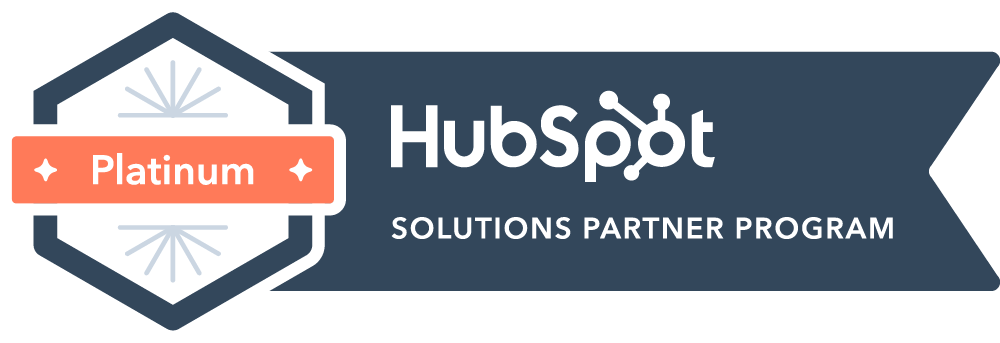10 Top GTM Strategies Using Data Enrichment for B2B Success

Table of Contents Data enrichment is the process of enhancing your existing customer and prospect data with additional information from external and internal sources. This goes beyond basic contact information to include behavioral patterns, technographic details, firmographic insights, and real-time engagement signals that create comprehensive prospect profiles. In a GTM (Go-To-Market) context, it enables sales, marketing, and RevOps teams to make data-driven decisions, improve targeting, and deliver personalized experiences at scale. The power lies in transforming raw contact lists into actionable intelligence that drives revenue outcomes. Below, you will learn more about what the top GTM strategies using data enrichment are and how they can boost B2B sales and marketing success. The Role of Data Enrichment in a B2B GTM Strategy Enriched data plays a pivotal role in B2B GTM planning by providing a 360-degree view of prospects and customers. It allows organizations to identify high-value opportunities, prioritize outreach, and craft messages that resonate with target personas. A robust GTM integration strategy ensures alignment across sales, marketing, and RevOps teams. When enriched data is shared across all functions, teams can coordinate campaigns, track engagement, and refine strategies based on accurate insights. This breaks down silos and creates consistent customer experiences. Mapping buyer personas with enriched data helps organizations understand customer pain points, preferences, and buying behaviors, creating a foundation for hyper-targeted GTM strategies. This evolution enables precise psychographic and behavioral segmentation beyond basic demographics. Top 10 GTM Strategies Using Data Enrichment 1. Intent Data Integration for Precise Targeting Intent data tracks online behavior and engagement signals to identify prospects actively researching solutions. Integrating this data allows GTM teams to focus on high-intent leads, improving conversion rates, and shortening sales cycles. Advanced intent platforms analyze content consumption signals, research downloads, competitor visits, and solution searches to create intent scores indicating research intensity and readiness to buy. Best Practices: Combine intent data with firmographic and technographic data for contextual relevance Use real-time alerts to trigger outreach at the optimal time Create intent-specific content tracks addressing research topics Establish intent thresholds matching sales capacity Best Tools: Bombora, G2 Buyer Intent, 6sense 2. Leveraging Firmographics and Technographics for Segmentation Firmographic data (company size, industry, location) and technographic data (technology stack used) help segment audiences for highly personalized campaigns. This ensures GTM teams reach the right prospects with relevant messaging. Combined data enables precision targeting like “Series B SaaS companies using Salesforce but lacking analytics capabilities,” creating sophisticated segments aligned with ideal customer profiles. Best Practices: Regularly update segmentation criteria to reflect market changes Combine with historical engagement data for deeper insights Create segment-specific value propositions Use technographic data for expansion opportunities Best Tools: Clearbit, ZoomInfo, Datanyze 3. Smart Lead List Building with Real-Time Data Sync Creating and maintaining up-to-date lead lists is critical for GTM efficiency. Real-time data sync ensures that sales and marketing teams always work with accurate, actionable information. Smart systems continuously score and rank leads based on changing data, ensuring promising opportunities remain prioritized while preventing outreach to outdated contacts. Best Practices: Automate lead enrichment to reduce manual entry errors Integrate lead lists directly into CRM and marketing automation platforms Establish data hygiene protocols for quality control Create trigger-based list updates responding to prospect changes Best Tools: HubSpot CRM, Salesforce, Outreach 4. Sales and Marketing Alignment Through Shared Enriched Data Enriched data acts as a single source of truth, fostering alignment between sales and marketing. Shared insights ensure both teams focus on the same high-value targets, leading to more efficient campaigns and improved pipeline quality. This alignment enables sophisticated lead handoffs with rich context about prospect needs, challenges, and buying signals beyond basic contact information. Best Practices: Standardize data definitions across teams Conduct regular sync meetings to review enriched data insights Establish shared KPIs creating aligned incentives Create feedback loops for continuous improvement Best Tools: Salesforce, HubSpot, Segment 5. Personalized Campaigns Based on Enriched Profiles Using enriched data to personalize campaigns improves engagement and conversion rates. Tailoring content to individual prospect profiles demonstrates relevance and builds trust. Advanced personalization references specific technologies, company milestones, and industry challenges, creating stronger emotional connections than generic messaging. Best Practices: Use dynamic content in emails and landing pages Segment campaigns based on behavior, company size, and industry Develop personalization hierarchies prioritizing impact Implement progressive personalization as data increases Best Tools: Marketo, Pardot, ActiveCampaign 6. ABM and Outbound Play Activation with Enriched Data Account-Based Marketing (ABM) benefits significantly from enriched data by enabling precise targeting of high-value accounts. Enriched profiles support outbound plays, helping sales reps prioritize the right contacts and deliver personalized outreach. Enriched data transforms ABM from theory to practice by providing organizational intelligence, trigger events, and stakeholder mapping necessary for strategic account development. Best Practices: Focus on top-tier accounts for maximum ROI Continuously update account insights to stay relevant Develop account-specific value propositions Create multi-stakeholder engagement strategies Best Tools: Demandbase, Terminus, Engagio 7. Trigger-Based Workflows for Smarter Engagement Trigger-based workflows automate outreach based on real-time prospect actions, ensuring timely engagement. Enriched data enhances these triggers by providing context about the prospect’s company, role, and behavior. Advanced workflows leverage enriched data for personalized automated responses based on prospect characteristics, transforming generic sequences into valuable experiences. Best Practices: Set up alerts for high-value engagement signals Personalize messaging based on enriched attributes Create trigger hierarchies for simultaneous activations Optimize timing based on prospect preferences Best Tools: HubSpot Workflows, Outreach, SalesLoft 8. Feedback Loops Between Sales, Marketing, and Data Teams Feedback loops ensure continuous improvement of enrichment processes. Sales and marketing teams can flag inaccurate or missing data, enabling the data team to refine enrichment workflows. These mechanisms create shared ownership of data quality while turning frontline insights into systematic improvements across the entire enrichment process. Best Practices: Schedule quarterly data review sessions Implement error-tracking dashboards to monitor enrichment accuracy Create standardized feedback forms for actionable insights Establish data quality SLAs for accountability Best Tools: Looker, Tableau, Data Studio 9. Progressive Profiling for Ongoing Data Accuracy Progressive profiling collects additional data over time, reducing
GTM Strategy for SaaS Startups: A Complete Guide

Table of Contents SaaS founders often spend months refining their product, yet many still struggle to generate consistent revenue. The gap isn’t always the product itself but the lack of a structured go-to-market (GTM) strategy. For SaaS startups, the GTM plan is the difference between building predictable growth and being lost in the noise. A strong GTM strategy defines who your customers are, how you reach them, what message will resonate, and how your business converts interest into revenue. It aligns product, marketing, and sales into one focused effort, a must for SaaS businesses where recurring revenue and retention dictate long-term success. Definition of GTM Strategy in the SaaS Context In SaaS, a GTM strategy is a comprehensive plan that connects your product with the right market and ensures that the journey from acquisition to retention is intentional. It goes beyond marketing campaigns or sales tactics. It defines how your software is positioned, priced, sold, and supported. Unlike one-off product launches, a SaaS GTM strategy requires ongoing alignment. Customer feedback, product updates, and new competitors continuously influence how a SaaS company reaches and retains users. Difference Between SaaS GTM vs. Traditional GTM Traditional GTM strategies often revolve around one-time product purchases or physical goods. SaaS GTM strategies are centered on recurring revenue models, where value must be proven repeatedly. Instead of a transactional sale, the focus shifts to adoption, engagement, and renewal. In SaaS, the buyer journey is also nonlinear. Prospects research extensively, test software before buying, and expect seamless onboarding. The GTM plan must reflect that behavior, ensuring every stage, from trial to retention, is integrated and data-driven. Why GTM Is Critical for SaaS Startups Early-stage SaaS companies operate in markets where differentiation is difficult and attention spans are short. Without a structured GTM approach, teams risk misallocating resources, confusing their target market, or overpromising features that don’t translate into value. A well-structured GTM plan helps startups achieve clarity, not just in marketing, but in decision-making across teams. It provides a shared understanding of who you’re building for, how success is measured, and what channels actually drive growth. Why SaaS Startups Need a Solid GTM Strategy High Competition in the SaaS Market The SaaS market grows denser every year, with new entrants launching similar tools or features. A solid GTM strategy ensures that your brand doesn’t compete purely on price or feature lists but on clarity of positioning and understanding of customer needs. Fast-Changing Buyer Expectations Modern SaaS buyers are informed and selective. They expect transparency, immediate proof of value, and personalized experiences. A GTM strategy helps align sales and marketing messages with those expectations, making your communication credible rather than transactional. B2B SaaS Sales Cycles: Long, Complex, Multi-Stakeholder Unlike B2C software, B2B SaaS purchases often involve multiple decision-makers, from users to technical evaluators to finance teams. A GTM plan maps how each stakeholder is engaged, ensuring consistent messaging and smoother deal progression. Risk of Churn Without a Clear GTM Even with a strong product, churn can spike if customers don’t understand your value quickly enough. A GTM strategy creates a unified path from acquisition through retention, so customers experience ongoing value and renew over time. Core Elements of a SaaS GTM Strategy Ideal Customer Profile (ICP) & Buyer Personas A precise ICP defines who benefits most from your product and who will buy it. For SaaS startups, that clarity prevents wasted spend on audiences that will never convert or retain. Buyer personas take it further by mapping pain points, motivations, and buying behavior. SaaS Value Proposition & Positioning Positioning communicates why your product matters. It’s not just what your tool does but how it changes a workflow or solves a persistent problem. The goal is to occupy a distinct space in your customers’ minds that competitors can’t easily replicate. Pricing Models (Subscription, Freemium, Usage-Based) SaaS pricing directly impacts acquisition and retention. Subscription models offer predictability, freemium drives volume, and usage-based pricing scales with customer value. The best GTM strategies align pricing with perceived value and customer growth potential. Sales Model Selection (PLG, SLG, Channel, Hybrid) Choosing between product-led growth (PLG), sales-led growth (SLG), or hybrid models depends on product complexity and target market. For example, PLG works well for self-serve tools with viral potential, while SLG suits enterprise products with longer cycles. Marketing Strategy (Inbound, Outbound, Content, ABM) SaaS growth often relies on a mix of inbound and outbound strategies. Inbound creates long-term demand through valuable content and thought leadership, while outbound drives targeted outreach to specific accounts. Account-based marketing (ABM) blends both for high-value prospects. Customer Success & Retention (Reducing Churn) Customer success isn’t a post-sale function; it’s part of the GTM system. Retention depends on proactive onboarding, measurable outcomes, and responsive support. Reducing churn directly improves lifetime value and predictability. 8 Steps to Build a GTM Strategy for SaaS Startups Step 1 – Define the Market & ICP Start with clear segmentation. Define the industries, company sizes, and roles that benefit most from your product. Validate these assumptions with real user data or pilot campaigns before scaling. Step 2 – Choose Your GTM Motion (PLG, SLG, etc.) Select a model that fits how your buyers prefer to engage. If your software solves an individual pain point, PLG may be ideal. If your solution affects entire departments, a sales-led or hybrid motion may work better. Step 3 – Craft Messaging & Positioning Clarity beats creativity. Your messaging should communicate specific outcomes rather than vague promises. Test different value propositions across channels to see what resonates with real prospects. Step 4 – Set Pricing & Packaging Pricing should align with your audience’s willingness to pay and reflect the value delivered. Avoid overcomplicated tiers early on; focus on a structure that’s easy to understand and flexible enough to evolve as you grow. Step 5 – Align Sales, Marketing, and Product Misalignment across teams slows growth. Hold regular cross-functional sessions to align goals, share customer insights, and ensure product updates match what sales
10 Best Ranked B2B Appointment Setting Agencies in 2025

Table of Contents In the high-stakes world of B2B sales, nothing matters more than a steady flow of qualified meetings with decision-makers. Yet for many companies, building an in-house SDR (Sales Development Representative) team is costly, time-consuming, and resource-heavy. That’s where a B2B appointment setting agency comes in. These specialized agencies take on the hard work of identifying prospects, running multi-channel outreach, and booking qualified sales meetings so your sales team can focus on closing deals. But with dozens of agencies promising results, how do you know which ones are worth your investment? To help you decide, we’ve ranked the 10 best B2B appointment setting agencies. 1. Whistle Best for: SaaS startups and growth-stage companies seeking rapid scale Whistle has emerged as a dominant force in the appointment generation space, establishing itself as the go-to partner for high-growth SaaS companies. With an impressive track record of over 300 successful campaigns and more than $100M in pipeline opportunities generated, they’ve proven their ability to deliver consistent results. Key Strengths: Dedicated SDR pods (2–3 SDRs + strategist per client), ensuring focused attention Lightning-fast campaign launches in just 10 days HubSpot Platinum Partner status for seamless CRM integration Multi-channel expertise spanning LinkedIn, email, and cold calling Specialized SaaS industry knowledge and proven methodologies Why choose Whistle: If you’re a startup or scale-up requiring fast execution, complete transparency, and a partner with deep SaaS experience, Whistle delivers unmatched value. 2. CIENCE Best for: Enterprise-level outbound campaigns at scale CIENCE stands as one of the most established names in outsourced SDR services. Their data-driven methodology combines advanced technology, proven processes, and skilled professionals to deliver consistent B2B meeting generation results for enterprises across diverse industries. Key Strengths: Proprietary platform for comprehensive data enrichment and validation Impressive enterprise client portfolio spanning multiple industries Globally distributed SDR teams for 24/7 coverage and localization Advanced analytics and reporting capabilities Why choose CIENCE: Perfect for large companies seeking a scalable partner with global delivery capabilities and enterprise-grade infrastructure. 3. Belkins Best for: Personalized outreach strategies and SMB markets Belkins has built its reputation on delivering highly personalized B2B appointment setting services that prioritize relationship building over volume. Their approach emphasizes quality interactions and tailored messaging that resonates with specific buyer personas. Key Strengths: Highly customized outreach strategies per persona and industry Strong emphasis on warm lead nurturing and trust building Proven experience in healthcare, SaaS, and professional services verticals Focus on long-term relationship development Why choose Belkins: Ideal if your buyers value personal connections and you prefer fewer, higher-quality meetings over high-volume approaches. 4. Martal Group Best for: North American tech companies and SaaS businesses Martal Group specializes in serving tech and SaaS businesses with senior-level SDRs who possess deep industry expertise. Based in Canada with a strong U.S. presence, they excel at helping companies penetrate North American markets effectively. Key Strengths: Senior SDRs with extensive domain experience and industry knowledge Transparent reporting dashboards with real-time campaign insights Laser focus on SaaS and IT companies Strong North American market expertise Why choose Martal Group: The optimal choice for targeting decision-makers within North America’s competitive tech ecosystem. 5. Operatix Best for: B2B software and cybersecurity companies with complex sales cycles Operatix positions itself as a comprehensive sales acceleration company with particular strength in enterprise software and cybersecurity sectors. They specialize in account-based appointment setting and sophisticated outbound campaigns targeting complex buying committees. Key Strengths: Deep specialization in complex tech sales environments Strong focus on enterprise buyer engagement Comprehensive multi-channel approach with heavy ABM emphasis Experience with long sales cycles and multiple stakeholders Why choose Operatix: Perfect for SaaS companies selling into mid-market or enterprise segments with complex buying processes. 6. EBQ (Everything But the Quota) Best for: Full-service sales and marketing support beyond appointment setting EBQ goes beyond traditional appointment generation services by offering comprehensive revenue operations support. Their model enables companies to outsource entire sales functions, from SDRs to marketing and customer success. Key Strengths: Comprehensive suite of outsourced sales and marketing services 100% U.S.-based SDR teams ensuring quality communication Flexible scaling options for entire revenue functions Integrated approach to sales and marketing alignment Why choose EBQ: Excellent choice if you need more than just appointment generation; a complete outsourced revenue engine. 7. MemoryBlue Best for: Growing SaaS companies requiring sales mentorship and team development MemoryBlue combines outsourced SDR services with its renowned SDR academy approach, training representatives who often transition into client organizations as permanent employees. Key Strengths: Comprehensive SDR training and career development programs Extensive track record in SaaS industry verticals Included coaching and sales mentorship services Potential for SDR acquisition after successful campaigns Why choose MemoryBlue: Strong option if you value SDR training, process building, and potential future hiring opportunities. 8. RevBoss Best for: Automated lead generation for startups and early-stage companies RevBoss emphasizes technology-driven appointment setting services through advanced automation and data insights. They specialize in email sequencing and automated outreach, primarily serving startups and SMBs. Key Strengths: Technology-first approach with advanced automation Rapid campaign launch cycles Cost-effective pricing for smaller companies Streamlined processes optimized for efficiency Why choose RevBoss: Ideal for early-stage SaaS companies seeking cost-effective, quick-to-launch outreach solutions. 9. SalesRoads Best for: U.S.-based appointment setting with guaranteed quality standards SalesRoads operates exclusively within the United States, maintaining high quality standards through native English-speaking SDRs and consistent service delivery across all industries. Key Strengths: 100% U.S.-based SDR teams ensuring cultural alignment Broad experience across multiple industries and verticals Strong emphasis on quality over quantity metrics Proven track record of consistent delivery Why choose SalesRoads: Perfect fit for companies prioritizing U.S.-based outreach with guaranteed SDR quality standards. 10. BlueZebra Best for: Niche B2B markets requiring specialized industry expertise BlueZebra has established expertise in specialized appointment setting for niche markets including healthcare, finance, and industrial sectors where industry knowledge is critical for success. Key Strengths: Deep industry specialization in niche verticals Extensive experience in outbound prospecting Relationship-driven approach emphasizing trust building Understanding of regulatory and compliance requirements Why choose BlueZebra: Ideal choice if your
Components of a GTM Strategy: A Complete Guide for SaaS & B2B

Table of Contents A strong product alone no longer guarantees traction. What separates companies that scale efficiently from those that stall is how well they take their product to market. A Go-to-Market (GTM) strategy gives that process structure. It defines who you’re targeting, what you’re offering, how you’ll reach them, and how every team contributes to success. For SaaS and B2B companies, where long sales cycles and complex buying committees are the norm, a well-defined GTM strategy isn’t optional. It’s the difference between scattered activity and coordinated growth. What is a Go-to-Market (GTM) Strategy? A GTM strategy is the operational plan that defines how a company brings its product or service to the right audience. It’s broader than a marketing plan because it connects marketing, sales, customer success, and product into one coordinated framework. While a marketing plan focuses on awareness and demand generation, a GTM strategy focuses on how a product reaches the market, gains adoption, and delivers commercial results. It answers questions like: Who is our ideal customer? What problems do we solve for them? Through which channels do we reach them? And how do we measure success? For a SaaS startup, this could mean launching an MVP to a niche segment with a product-led approach. For an enterprise product, it may involve layered sales motions, multi-stakeholder engagement, and strategic partnerships. Both rely on the same GTM foundation: clarity, alignment, and execution discipline. Differences Between GTM and Marketing Strategy A GTM strategy is cross-functional by design. It aligns sales, marketing, product, and customer success around shared outcomes. Marketing strategies can exist within that structure but serve different objectives, such as awareness or lead generation. Where marketing focuses on campaigns, GTM focuses on the entire customer acquisition and retention lifecycle. It determines not only how prospects hear about you, but how they buy, onboard, and stay. Why GTM Strategies Fail and How to Avoid Pitfalls Many GTM strategies fail before they begin, often for preventable reasons. The most common include unclear target customers, weak positioning, and poor alignment between teams. When sales and marketing pursue different audiences or measure success differently, execution falters. Messaging loses consistency, prospects receive mixed signals, and potential deals stall. Avoiding these pitfalls starts with clarity and accountability. Define your Ideal Customer Profile (ICP) before crafting messaging. Build your value proposition on data, not assumptions. And establish shared KPIs across departments to maintain alignment. A successful GTM strategy isn’t written once; it’s refined through constant feedback between teams. 8 Essential Components of a Winning GTM Strategy 1. Market Intelligence and Research Every GTM strategy begins with understanding the market landscape. Market intelligence defines where your opportunity exists, who the key players are, and what trends are shaping customer needs. Start with TAM, SAM, and SOM analysis to quantify your addressable opportunity. Use tools like CB Insights, Gartner, and SimilarWeb to analyze competitors, identify whitespace, and map customer pain points. For SaaS companies, ongoing research is critical. Consider how Zoom built its initial strategy: by understanding where existing conferencing tools failed, reliability and user experience, and targeting those gaps with precision. 2. Ideal Customer Profile (ICP) and Buyer Personas Your ICP defines the companies that benefit most from your solution. Buyer personas describe the decision-makers within those companies, their motivations, challenges, and buying triggers. A strong ICP uses firmographic, demographic, and behavioral criteria. Tools like HubSpot and Clearbit can enrich your data to identify high-fit accounts and avoid wasted outreach. The distinction between ICP and personas is important: your ICP shapes strategy, while personas guide execution. Without both, your GTM plan risks chasing the wrong audience or missing the right one entirely. 3. Value Proposition and Messaging Once you understand your audience, you need a clear statement of value. A strong value proposition answers one question: Why should this customer care? Effective messaging articulates outcomes, not features. The “So What?” test helps here, if your claim doesn’t clearly connect to a measurable business result, refine it. Slack built its early success by emphasizing productivity outcomes, not chat features. Its messaging positioned it as a tool that “eliminates internal email,” immediately clarifying both benefit and differentiation. 4. Competitive Positioning and Differentiation Positioning defines where your product sits in the market relative to alternatives. It’s not about being everything to everyone, but being the obvious choice for someone specific. A positioning matrix helps visualize where you stand on attributes that matter to buyers. Craft “Only We” statements to define unique advantages beyond price. Take Notion as an example. It differentiated itself from Trello and Evernote not through cost or features but by combining notes, databases, and project management in one flexible interface. Clear positioning made its message resonate with a specific audience, product teams seeking versatility. 5. Pricing and Packaging Strategy Pricing strategy is both an art and a science. For SaaS, options include freemium, tiered, and usage-based models. The right choice depends on how customers perceive value and how you expect adoption to grow. Value-based pricing ties cost to outcomes, not inputs. Psychology also plays a role: price anchoring can make higher tiers appear more attractive when framed against a “starter” plan. Dropbox executed this masterfully. Its freemium model encouraged mass adoption while converting users through seamless feature upsells, driving both reach and revenue efficiency. 6. Channel and Distribution Strategy How you reach your customers is as important as what you sell. Your channel strategy defines the routes to market, whether through direct sales, partner ecosystems, marketplaces, or product-led growth. Each model carries trade-offs. Direct sales offer control but require scale. Partners accelerate reach but dilute influence. Marketplaces simplify discovery but limit visibility. Many SaaS companies use a blend, aligning channel mix with buyer preferences. Atlassian’s self-serve model is a prime example. By prioritizing low-touch, frictionless purchasing, it grew enterprise adoption without a large outbound sales force. 7. Sales Process That Converts A structured sales process turns interest into revenue. In B2B and SaaS, this means shifting from transactional selling to consultative selling,
10 Reasons Traditional Lead Generation Is Failing B2B SaaS Companies

Table of Contents B2B SaaS companies live and die by their ability to fill the sales pipeline with qualified leads. However, the tactics that once worked such as mass email blasts, cold call blitzes, and generic gated content are no longer delivering results. Why? Because B2B SaaS demand generation has undergone a fundamental shift. Modern software buyers are more informed, digital-first, and selective than ever before. They don’t want to be “sold to”; they want to be educated, engaged, and guided toward solutions that truly fit their needs through sophisticated lead nurturing campaigns and strategic SaaS marketing automation. The shift from traditional lead generation to modern demand generation represents more than just a tactical change; it’s a fundamental shift of how B2B companies attract, engage, and convert prospects. 1. Buyers Have Taken Control of the Purchase Journey The modern SaaS buyer completes 57% of their research before ever talking to sales representatives. This buyer empowerment has completely disrupted traditional SaaS lead qualification processes. Traditional lead generation relies on pushing messages out to prospects through interruptive channels, but today’s buyers prefer to pull information in at their own pace through self-service resources and peer networks. What to do instead: Shift toward comprehensive demand generation strategies that include educational content marketing, community engagement, and thought leadership positioning. Focus on creating valuable resources like interactive demos, ROI calculators, and industry benchmarking tools that position your brand as a trusted resource throughout the entire buyer’s journey. Implement account-based marketing (ABM) tactics that align with how modern buyers actually research and evaluate B2B software solutions. 2. Cold Calls Aren’t Cutting Through Information Overload The rise of caller ID, spam filters, and gatekeeper resistance has created significant barriers to traditional outbound prospecting methods. Additionally, remote work has made it even harder to reach prospects through traditional phone-based outreach. 32% of prospects answer a call from companies they haven’t yet spoken with (RAIN GroupTop Performance in Sales Prospecting Benchmark Report). What to do instead: Implement sophisticated multi-channel outreach strategies that combine LinkedIn social selling, personalized video messaging, and intent-driven email campaigns. Use B2B sales prospecting tools that leverage warm introductions, referral networks, and social proof. Focus on creating value-first touchpoints that demonstrate expertise rather than immediately pushing for meetings. Modern SaaS lead generation requires a consultative approach that builds relationships across multiple touchpoints. 3. Over-Reliance on Gated Content Is Creating Friction Ten years ago, ebooks and whitepapers behind lead capture forms were goldmines for generating MQLs (Marketing Qualified Leads). Today, buyers are experiencing form fatigue and are reluctant to share contact information for generic content. The proliferation of ungated, high-quality content across the internet has raised buyer expectations for immediate value without friction. What to do instead: Transition toward ungated, high-value content strategies including blog posts, interactive webinars, educational podcasts, and live product demonstrations. Use progressive profiling and behavioral tracking to gradually collect prospect information rather than demanding it upfront. Implement content marketing strategies that provide instant value and build trust through consistent, valuable interactions. Consider freemium models and product-led growth (PLG) approaches that allow prospects to experience your solution before committing to sales conversations. 4. Generic Messaging Fails to Resonate with Target Audiences Traditional campaigns often rely on one-size-fits-all messaging that doesn’t address specific industry challenges or role-based pain points. But modern SaaS buyers expect hyper-personalized experiences tailored to their unique business situations, company size, technology stack, and position in the buying cycle. Generic messaging fails to cut through the noise in increasingly crowded software categories. What to do instead: Develop sophisticated ICP (Ideal Customer Profile) segmentation based on firmographics, technographics, and behavioral data. Create dynamic messaging frameworks that speak directly to the challenges of each target persona across different company sizes, industries, and use cases. Implement SaaS marketing automation platforms that enable personalized content delivery based on prospect behavior, engagement history, and demonstrated intent signals. 5. Sales and Marketing Misalignment Creates Pipeline Leakage Traditional lead generation often operates in silos, with marketing generating leads and handing them off to sales without proper qualification or context. This misalignment leads to frustrated sales teams pursuing unqualified prospects and missed opportunities with high-intent buyers. The disconnect between marketing metrics (leads generated) and sales metrics (revenue generated) creates organizational tension and inefficient resource allocation. What to do instead: Establish comprehensive revenue operations (RevOps) frameworks that align sales and marketing around shared definitions of MQLs, SQLs (Sales Qualified Leads), and pipeline opportunities. Create detailed service level agreements (SLAs) between teams that include response times, follow-up protocols, and feedback loops. Implement lead scoring models that incorporate both demographic data and behavioral signals to ensure only sales-ready prospects enter the pipeline. Use shared dashboards and regular alignment meetings to maintain focus on revenue generation rather than activity metrics. 6. Vanity Metrics Don’t Drive Revenue Growth Click-through rates, impression counts, and raw lead volume once defined marketing success. However, in the SaaS business model, more leads don’t automatically translate to more revenue especially if those leads aren’t properly qualified or aligned with your ideal customer profile. Traditional metrics often mask underlying issues with lead quality, pipeline velocity, and customer acquisition efficiency. What to do instead: Focus on revenue-centric metrics including pipeline velocity, Customer Acquisition Cost (CAC) to Customer Lifetime Value (LTV) ratios, lead-to-customer conversion rates, and time-to-revenue. Track leading indicators like demo completion rates, trial-to-paid conversion percentages, and account expansion opportunities. Implement attribution modeling that connects marketing activities to actual revenue outcomes, enabling data-driven optimization of demand generation investments. 7. Traditional Events Have Been Permanently Disrupted Trade shows and in-person networking events were once cornerstone channels for B2B lead generation, providing face-to-face relationship-building opportunities. The global shift toward remote work and virtual interactions has fundamentally changed how business relationships form and deals progress. Traditional event-heavy strategies are no longer sustainable or scalable for modern SaaS companies. What to do instead: Build comprehensive digital-first demand generation strategies that include virtual events, online communities, and strategic partnerships. Invest in interactive webinar platforms, virtual conference participation, and digital
Understanding the Difference Between BDR and SDR: A Complete Guide

Table of Contents Understanding who does what in a sales team can feel more complex than it should be. The acronyms alone, SDR and BDR, are enough to leave people second-guessing where one role ends and the other begins. Yet for companies scaling revenue and for individuals building a career in sales, this distinction matters. The success of a sales function often depends on how clearly these roles are defined and executed. Getting these roles right is not a matter of semantics. It influences how efficiently a sales team operates, how quickly opportunities move through the pipeline, and how effectively a company can expand into new markets. What Is a Sales Development Representative (SDR)? The Sales Development Representative, or SDR, is often the first point of contact between a business and a potential customer. Within B2B sales, the SDR role focuses on prospecting and qualifying leads before passing them along to Account Executives. Key responsibilities:SDRs spend their time researching prospects, reaching out through email, calls, and LinkedIn, and qualifying inbound leads generated by marketing. Their job is to ensure the sales pipeline is filled with opportunities that are both interested and aligned with the company’s target profile. Skills needed for success:Successful SDRs are persistent, but persistence alone is not enough. They also need curiosity, which allows them to ask the right questions and uncover whether a prospect has genuine potential. Research skills matter because most SDRs spend time understanding industries, companies, and buyer roles before reaching out. Communication is equally important, both in how they frame outreach and how they listen during conversations. And then there is time management: SDRs often juggle dozens of prospects in a single day, and the ability to stay organized directly impacts the quality of interactions and the results they deliver. Benefits to the organization:SDRs streamline the sales process by handling the earliest stages of outreach and qualification. Instead of Account Executives spending time on cold calls or filtering through unqualified leads, they can focus on running sales conversations and closing opportunities. The result is a more balanced use of resources: sales teams operate more efficiently, conversion rates improve, and companies see greater return on the effort that goes into pipeline building. What Is a Business Development Representative (BDR)? A Business Development Representative, or BDR, plays a slightly different role. While SDRs concentrate on lead qualification, BDRs are tasked with identifying new business opportunities, often in accounts or markets the company has not yet engaged. Key responsibilities:BDRs map out target accounts, identify decision-makers, and design outreach strategies tailored to those organizations. Their work often involves outbound prospecting into companies that may not yet know much about the product or service. Strategic research and personalized engagement are central to the role. Skills needed for success:The strongest BDRs are commercially minded and able to connect the dots between a prospect’s business challenges and the solutions their company provides. They need sharp research skills, adaptability, and the confidence to approach senior executives with informed perspectives. Benefits to the organization:BDRs expand the company’s reach by opening doors that would otherwise remain closed. They help sales teams move into new markets, uncover accounts with high potential, and position the company for long-term growth. Core Responsibilities: SDR vs BDR Although SDRs and BDRs often sit in the same department, their daily work looks quite different. Focus of responsibilities: SDRs concentrate on tactical prospecting and qualification. BDRs focus on more strategic account targeting and outreach. Scope of activities: SDRs interact with prospects earlier in the funnel, confirming need and fit. BDRs engage prospects at a higher level, exploring broader business opportunities. Metrics: SDRs are measured by meetings booked, opportunities qualified, and lead-to-opportunity conversion rates. BDRs are measured by new account penetration, quality of strategic meetings, and pipeline created from previously untapped markets. Outcome: SDR activity fuels immediate sales pipeline, while BDR activity shapes the company’s longer-term growth trajectory. Both roles require consistency, but the nature of their work differs: SDRs handle higher volume, BDRs go deeper with fewer but more strategically significant accounts. SDR and BDR in the Sales Funnel Understanding how SDRs and BDRs fit into the sales funnel clarifies why both roles are necessary. SDRs in the funnel: SDRs typically sit at the top of the funnel, qualifying leads that come from marketing campaigns or inbound inquiries. They ensure these leads are worth an Account Executive’s time. Their work directly supports the early stages of the pipeline. BDRs in the funnel: BDRs sit slightly further along, initiating outbound conversations with targeted accounts. Their job is to create opportunities where none previously existed, often requiring more research and strategic outreach. Interaction with Account Executives and marketing: Both roles work closely with AEs, but in different ways. SDRs hand off qualified inbound leads, while BDRs provide new account opportunities. Both roles benefit from alignment with marketing, ensuring messaging and targeting remain consistent. Inbound vs outbound examples: An SDR might follow up on a prospect who downloaded a whitepaper. A BDR, on the other hand, might identify a potential customer in a sector the company has not yet sold to and initiate first contact. Career Paths: SDR vs BDR The SDR and BDR roles often serve as entry points into B2B sales, but the career trajectories are not identical. Typical SDR career path:Many SDRs progress into Account Executive positions. After proving they can generate and qualify opportunities, they move into roles where they own the full sales cycle, from running meetings to closing deals. Some SDRs also shift into marketing or customer success roles, depending on their strengths. Typical BDR career path:BDRs often transition into more strategic sales or account management positions. Because they work closely with senior decision-makers and focus on opening high-value accounts, the move into enterprise sales or strategic account management is a natural next step. Opportunities for growth:Both roles can lead to management positions, such as SDR Manager or Business Development Manager. These leadership roles involve coaching teams, refining processes, and aligning sales
5 Industries Winning Big with Appointment Generation Companies in 2025

Table of Contents Building a consistent sales pipeline has always been the toughest challenge for B2B companies. Cold calling alone doesn’t cut it anymore, and sales reps often get bogged down with prospecting instead of closing deals. That’s where appointment generation companies come in, specialized partners that help businesses book high-quality meetings with decision-makers through multi-channel outreach. In 2025, appointment generation is no longer just for tech startups. A wide range of industries are leveraging these services to accelerate growth, penetrate new markets, and free their sales teams to focus on what they do best: closing. Here are five industries winning big with appointment generation companies in 2026. 1. SaaS and Technology Providers The SaaS world is crowded, competitive, and noisy. With thousands of SaaS companies competing for attention, buyers are overwhelmed with options, and standing out requires more than just running ads or publishing content. Appointment generation services help SaaS and tech firms cut through the noise by: Mapping buying committees across IT, finance, and operations: Modern SaaS purchases involve multiple stakeholders, from technical evaluators to budget holders and end users. Professional appointment generation teams understand these complex dynamics and know how to engage each persona with relevant messaging. Using intent data to target accounts already researching solutions: By monitoring digital behavior signals like content downloads, website visits, and search patterns, these services can identify prospects actively in the market for solutions, dramatically improving conversion rates. Building personalized sequences across LinkedIn, email, and phone: Rather than relying on single-channel outreach, sophisticated campaigns coordinate touchpoints across multiple platforms to build familiarity and trust over time. Delivering warm, context-rich introductions for sales teams: When appointments are booked, they come with detailed briefings about the prospect’s specific challenges, technical requirements, and buying timeline, allowing sales reps to have more productive conversations. With average SaaS buying cycles extending to 6–12 months and involving up to 10 decision-makers, having a partner who knows how to navigate complex sales processes is a game-changer. 2. Healthcare and HealthTech Healthcare providers and HealthTech companies face unique challenges that make appointment generation particularly valuable. The industry operates under strict regulatory requirements, involves highly educated and skeptical buyers, and requires building trust before any meaningful conversations can occur. Traditional sales approaches often fail in healthcare because decision-makers are extremely busy, risk-averse, and skeptical of vendor claims. A hospital CMO might receive dozens of pitches weekly from medical device companies, pharmaceutical firms, and health tech startups, making it nearly impossible for any single vendor to break through. Healthcare appointment generation companies help by: Identifying the right mix of decision-makers (CFOs, physicians, compliance officers): Healthcare purchases typically involve clinical champions, administrative decision-makers, and compliance reviewers. Understanding who influences each type of decision and how to reach them appropriately requires deep industry knowledge. Building credibility through thought leadership content in outreach: Rather than leading with product features, effective healthcare outreach focuses on clinical outcomes, patient safety improvements, and regulatory compliance benefits that resonate with medical professionals. Ensuring conversations meet compliance and data privacy requirements: Healthcare appointment generation requires understanding HIPAA regulations, institutional review processes, and professional communication standards that differ significantly from other industries. Reducing sales team burnout by filtering out unqualified prospects: Healthcare sales cycles can extend 18+ months, making it crucial to focus on prospects with genuine need, budget authority, and realistic implementation timelines. As digital health adoption accelerates post-pandemic, providers that outsource appointment generation can enter hospitals, clinics, and private practices faster with the right message to the right person. 3. Financial Services and FinTech Banks, wealth managers, insurance firms, and FinTech startups are under intense pressure to deliver personalized services while competing with digital-first challengers. The financial services landscape has been disrupted by nimble FinTech companies that can move faster than traditional institutions, creating both opportunities and threats across the sector. The challenge for financial services companies is reaching decision-makers who are increasingly cautious about new vendors, especially in the wake of high-profile security breaches and regulatory scrutiny. Trust has become even more critical, and traditional cold outreach often triggers skepticism rather than interest. Appointment generation partners give them an edge by: Segmenting high-net-worth individuals, SMB owners, or enterprise CFOs: Different financial services require completely different approaches. Wealth management outreach to high-net-worth individuals requires discretion and sophistication, while SMB banking services need to emphasize efficiency and cost savings. Navigating compliance-heavy conversations with tailored messaging: Financial services marketing and sales must comply with SEC regulations, FINRA requirements, and banking laws that restrict certain claims and require specific disclosures. Professional appointment generation teams understand these constraints and craft compliant messaging. Leveraging multi-channel outreach to build trust with conservative buyers: Financial decision-makers often prefer traditional communication channels and need multiple touchpoints before agreeing to meetings. Effective campaigns combine direct mail, phone outreach, and digital channels to build credibility over time. Streamlining handoffs so advisors can focus on relationship-building: Financial services sales is ultimately about trust and relationships. By handling initial prospecting and qualification, appointment generation allows advisors and relationship managers to focus on higher-value activities. With stricter regulations and a crowded FinTech market, firms that can book meaningful first conversations at scale are winning market share. 4. Manufacturing and Industrial Companies Historically, manufacturing and industrial firms relied on trade shows, cold calls, and referrals to generate leads. This approach worked when buyers had limited access to information and depended on vendor relationships for education about new technologies and solutions. But in 2025, buyers are researching online long before they speak to vendors. Industrial procurement managers now conduct extensive digital research, comparing solutions, reading case studies, and evaluating vendors before any sales contact occurs. This shift has left many traditional manufacturers struggling to reach modern buyers effectively. Appointment generation companies help manufacturers by: Targeting procurement managers and plant directors with precision: Industrial sales often involve highly technical buyers who need specific expertise and detailed technical specifications. Generic outreach fails because these buyers can immediately identify sales messages that lack industry understanding. Showcasing ROI-driven solutions like automation and
What Is an SDR in B2B Sales? A Beginner’s Guide

Table of Contents Every successful sales organization depends on a consistent flow of qualified opportunities. Behind this flow, you’ll often find Sales Development Representatives (SDRs). While the title has become common in B2B companies, the meaning of the SDR role in sales is not always clear to those outside of the function. For beginners, understanding what an SDR does in sales is the starting point for appreciating how modern pipelines are built and maintained. The SDR role is typically an entry-level position in B2B sales, designed for professionals who want to learn the mechanics of prospecting, qualification, and engagement. Although often underestimated, it is one of the most influential jobs in shaping a company’s revenue outcomes. Before exploring skills, challenges, and career paths, let’s begin with a clear SDR role explained: SDRs are responsible for moving leads from interest to qualified opportunity, ensuring that Account Executives (AEs) can spend their time closing the right deals. What Does an SDR Do in Sales? At its core, the SDR role is about identifying and qualifying prospects who could become valuable customers. This process involves several responsibilities that build the bridge between marketing campaigns and closed deals. SDRs engage in prospecting and lead generation, identifying individuals and companies that fit the ideal customer profile. Once leads are identified, SDRs qualify them through research, outreach, and conversations to determine whether they are worth the time of senior sales staff. Equally important, SDRs create the first impressions of a company. Their outreach, tone, and ability to connect shape how potential buyers view the brand. This makes professionalism, empathy, and consistency vital skills. Outbound SDRs take a proactive role in reaching new prospects, often through cold calling, carefully structured email sequences, and social platforms like LinkedIn. At the same time, SDRs work closely with marketing teams to act on signals from campaigns, and with sales teams to ensure seamless handoff to AEs. The role sits at the intersection of relationship-building and systematic outreach. Why Are SDRs Important in B2B Sales? The impact of SDRs extends beyond the number of calls or emails sent. Their work directly influences pipeline health, ensuring there are enough qualified opportunities for Account Executives to pursue. Without this function, sales cycles slow, revenue targets become harder to meet, and growth suffers. By qualifying leads and filtering out poor fits, SDRs allow AEs to focus on high-value opportunities. This specialization improves productivity and increases the likelihood of closing. It is also worth clarifying the difference between SDRs and Business Development Representatives (BDRs). While terms are sometimes used interchangeably, many organizations define SDRs as focusing on inbound or outbound lead qualification, while BDRs often target new business opportunities at a more strategic level. The exact definitions can vary, but the importance of both roles is undeniable. Key Skills Every SDR Needs to Succeed The most effective SDRs combine technical know-how with interpersonal skills. Research and market knowledge are the foundation, enabling SDRs to understand the prospects they contact and tailor their outreach effectively. Communication and active listening skills are critical. Prospects rarely respond to generic pitches, but they often respond when they feel understood. SDRs who ask the right questions and listen carefully stand out. Resilience and persistence are non-negotiable. Sales development involves consistent rejection. Those who succeed learn to treat rejection as part of the process rather than a reflection of personal ability. Time management and organization play a large role, too. With quotas to meet and outreach sequences to follow, efficiency separates strong SDRs from average ones. Finally, technical fluency is essential. SDRs must be comfortable using CRM platforms, AI-enabled research tools, and communication software. These systems are not optional; they define how the role is executed at scale. Inbound vs. Outbound SDRs Not all SDRs perform the same function. Inbound SDRs handle leads generated through marketing campaigns, such as website sign-ups, webinar attendees, or content downloads. Their role is to respond quickly, qualify interest, and pass along opportunities that are worth pursuing. Outbound SDRs, by contrast, go directly into the market to identify new prospects. This involves researching target accounts, reaching out through multiple channels, and nurturing interest until a conversation with an AE makes sense. For example, an inbound SDR may follow up on a demo request submitted through a company website, while an outbound SDR may identify the head of IT at a target account and begin a sequence of outreach messages. Both workflows require discipline and skill, but the approaches are distinct. Outsourced SDR Services: When and Why Businesses Use Them Some companies build internal SDR teams, while others turn to outsourced SDR services. Outsourcing can provide immediate scalability, access to trained professionals, and reduced costs compared to hiring internally. It allows businesses to accelerate pipeline growth without the time and expense of building and training a team from scratch. That said, outsourcing has challenges. External teams may require extra alignment with company culture, messaging, and brand voice. Choosing a partner carefully is critical. The best providers act as extensions of internal teams, not as disconnected vendors. At Whistle, we often see businesses turning to outsourced SDR services when they need rapid market entry, global reach, or specialized expertise. For organizations that want predictable pipeline growth but lack internal resources, this approach offers significant advantages. Career Path: Where Does the SDR Role Lead? For many, the SDR role is a stepping stone to more senior sales positions. A common progression moves from SDR to Account Executive, then to Sales Manager, and potentially into leadership roles such as Director of Sales or VP of Revenue. Training and promotion timelines vary, but ambitious SDRs can often move into closing roles within 12 to 24 months. Along the way, they gain exposure to sales processes, customer interactions, and industry knowledge that benefit them throughout their careers. Is the SDR role a long-term career? For some, yes. Many companies value SDR managers who can coach teams, scale processes, and develop junior talent. However, most professionals
Top 10 SDR Outsourcing Companies to Scale Your Sales (2025)

Table of Contents Building a high-performing sales development team in-house has become increasingly challenging for B2B companies. The average cost to hire and train a single SDR now exceeds $75,000, with typical ramp times extending 3-6 months before seeing meaningful results. Add in turnover rates averaging 35-40% annually, and many businesses are discovering that SDR outsourcing offers a more predictable, scalable path to consistent lead generation. The challenge lies in selecting the right SDR outsourcing partner. Our clients tell us that evaluating potential providers typically consumes 4-6 weeks of executive time, requiring extensive research, vendor calls, and proposal reviews just to narrow down the top contenders. Having worked with dozens of companies through their SDR outsourcing evaluation process, we’ve compiled this comprehensive guide to save you time and ensure you make the best decision for your business. Each company listed has been thoroughly vetted based on client results, industry reputation, and service quality. Interested in learning more about building a predictable sales pipeline? We offer strategy meetings to help B2B companies optimize their lead generation approach. Quick Comparison: Top 10 SDR Outsourcing Companies # Company Specialties Pricing Range 1 Whistle Multi-channel outreach, enterprise focus, guaranteed meetings $5,000-$12,000/month 2 SalesRoads Full-scale outbound, telemarketing focus $5,400-$9,500/month 3 CIENCE Human + AI approach, global reach $3,000-$8,000/month 4 Belkins Multi-channel campaigns, tech specialization $5,000-$14,800/month 5 MarketStar Enterprise solutions, industry expertise Custom pricing 6 OutboundSquad LinkedIn focus, personalized outreach $4,000-$10,000/month 7 LeadGenius Data + SDR services, compliance focus $6,000-$12,000/month 8 SalesLoft (Managed) Platform + managed services $8,000+/month 9 Operatix International markets, complex sales cycles Custom pricing 10 Pearl Lemon Cost-effective, growing companies $2,500-$6,000/month 1. Whistle – Enterprise-Grade SDR Outsourcing with Guaranteed Results Website: www.whistle.ltd About Whistle stands out in the SDR outsourcing space by focusing exclusively on enterprise and mid-market B2B companies with complex sales cycles. Founded in 2019, they’ve built a reputation for delivering consistent, high-quality appointments through their data-driven methodology and rigorous quality standards. Unlike many providers who compete on volume, Whistle guarantees specific meeting outcomes and maintains one of the industry’s highest show rates at 87%. Their client retention rate of 94% reflects their commitment to long-term partnership rather than short-term lead generation. Their SDR Process Whistle’s process starts with building a strong strategic foundation through deep customer analysis, competitive research, and Ideal Customer Profile (ICP) development. From there, they design multi-channel campaigns across LinkedIn, email, and phone that build familiarity and trust through carefully sequenced touchpoints. Dedicated SDR teams execute and optimize these campaigns for consistency and specialization, while seamless warm handoffs ensure sales teams receive fully qualified meetings with complete context, pain points, and next steps for a smooth transition. Primary Channels LinkedIn Sales Navigator: Advanced targeting and personalized outreach Multi-touch Email Campaigns: Sophisticated automation with personal touches Strategic Cold Calling: Research-backed conversations, not cold dials Account-Based Marketing Integration: Coordinated campaigns with marketing teams Pricing Whistle’s investment typically ranges from $5,000-$10,000 per month, with most clients averaging $8,500 monthly for comprehensive SDR services. Their performance-based pricing model aligns their success with yours, ensuring you only pay for results that drive real business growth.” Pros Guaranteed Performance: One of the few providers offering meeting guarantees with penalties for underperformance Enterprise Expertise: Deep understanding of complex B2B sales cycles and stakeholder dynamics Quality Over Quantity: Focus on meeting quality results in higher close rates and shorter sales cycles Cons Premium Pricing: Higher cost structure may not suit early-stage or budget-constrained companies Enterprise Focus: Less experience with SMB or transactional sales models Minimum Commitment: Requires 6-month initial engagement for optimal results Rating ⭐⭐⭐⭐⭐ (4.9/5 stars) Based on client reviews, retention rates, and performance metrics 2. SalesRoads – Full-Scale Outbound with Telemarketing Focus Website: salesroads.com About SalesRoads has been a stalwart in the B2B lead generation space for over 13 years, building its reputation on high-volume telemarketing campaigns and comprehensive outbound strategies. They specialize in creating end-to-end sales development programs that combine phone-based prospecting with email and social outreach. Their strength lies in rapid deployment and scalable campaigns, making them ideal for companies needing immediate pipeline acceleration. With over 200 SDRs and a proven playbook approach, SalesRoads can launch campaigns within 2-3 weeks of engagement. Their SDR Process SalesRoads follows a systematic approach, starting with a comprehensive business analysis and market research phase. They create detailed buyer personas and develop multi-touch campaigns spanning 6-8 weeks per prospect cycle. Their process emphasizes phone-first outreach, with SDRs making 80-120 calls daily, supported by coordinated email sequences and LinkedIn touches. Each campaign includes A/B testing of messaging, timing, and approach to optimize performance continuously. Primary Channels Cold calling (primary focus) Email campaigns LinkedIn outreach Social selling Pricing $5,400-$9,500/month depending on campaign scope and dedicated resource allocation. Pros Extensive telemarketing expertise and infrastructure Rapid campaign deployment Scalable team structure for large volumes Proven processes for various industries Cons Heavy emphasis on cold calling may not suit all target audiences Less focused on complex, consultative sales cycles Higher minimum investment requirements Rating: ⭐⭐⭐⭐⭐ (4.8/5) Based on G2 and client reviews on their own website 3. CIENCE – Human + AI Powered Lead Generation Website: cience.com About CIENCE combines human intelligence with artificial intelligence to deliver scalable lead generation solutions. Founded in 2015, they’ve developed a unique methodology that uses machine learning to optimize outreach while maintaining the personal touch of human SDRs. Their platform approach allows for sophisticated campaign management and real-time optimization, making them suitable for companies wanting data-driven results with transparent reporting. Their SDR Process CIENCE’s approach centers on their proprietary GO Platform, which integrates prospect research, outreach execution, and performance tracking. Their SDRs handle 40-60 personalized touches per day, with AI assistance in research and initial targeting. They emphasize multi-channel sequences with 8-12 touchpoints over 6 weeks, including email, LinkedIn, phone calls, and even direct mail for high-value prospects. Primary Channels Email marketing LinkedIn outreach Cold calling Direct mail integration Pricing $3,000-$8,000/month based on volume and service level requirements. Pros Technology-enhanced productivity Transparent reporting and analytics Global team providing cost-effective solutions Flexible engagement models
B2B Lead Quality Metrics: How to Measure What Actually Matters

Table of Contents The worst thing a B2B company can do is fill its funnel with leads that never buy. You end up with big dashboards, frustrated salespeople, and budgeting that looks great on paper but fails in practice. Instead of hunting volume, the real mastery lies in understanding lead quality metrics, the measures that tie your marketing engine directly to revenue. Growth leaders pay attention to metrics that signal real buying intent and long-term revenue potential, favoring measures that track opportunities rather than raw contact volume. Whistle follows the same principle when evaluating B2B lead providers, focusing on the quality of leads that convert into revenue. Why Lead Quality Matters More Than Lead Volume Most B2B firms fall into the trap of celebrating big lead counts. But getting 1,000 unqualified names is worse than getting 100 highly relevant ones. Here’s why quality wins: High volumes of unqualified leads inflate your true cost per lead (CPL). You chase volume, but the leads never convert, so your spend per eventual closed deal skyrockets. Poor leads drive up CAC and drag down LTV. If your sales team is chasing bad-fit accounts, your acquisition cost goes up. Worse, some of those accounts will churn quickly, dragging your customer lifetime value down. It cascades. SDRs waste time. Sales team morale deteriorates. Your forecasts get distorted. To put a number on it: as many as 79 % of marketing leads never convert into sales due to a lack of nurturing or poor initial qualification. So when evaluating B2B lead providers, don’t focus on how many leads they deliver. Focus on how many eventually turn into revenue. Core Metrics for Measuring B2B Lead Quality Here are the metrics you should be watching closely, and demanding in reports from your lead providers. Lead-to-SQL Conversion Rate Definition: The percentage of leads (e.g. MQLs or marketing‐qualified prospects) that become Sales Qualified Leads (SQLs). Why it matters: This metric shows whether your lead sources are hitting your ideal customer profile (ICP) or just dumping broad names. If the percentage is low, your targeting or provider quality is off. Benchmarks: In B2B SaaS or enterprise sales, a healthy lead-to-SQL rate might fall somewhere between 5% and 20%, depending on price point, vertical, and sales sophistication. Opportunity-to-Customer Conversion Rate Definition: The percentage of opportunities (SQLs accepted into the pipeline) that eventually close and become paying customers. Why it matters: This is the ultimate test of true lead quality. It filters out hype and shows which sources deliver real revenue. Use with providers: Ask your B2B lead providers to provide this metric per source. If one provider delivers many SQLs but none convert, their quality is weak. Average Deal Size and Revenue Impact All leads are not created equal. Some generate small deals; others land big contracts. Why track this: If a lead source consistently brings larger deals, it’s more valuable even if the volume is lower. When you measure purely count metrics, you bury this nuance. How to use it: Segment conversion and pipeline reports by lead source and compare average contract value across sources. Ask providers to co‐report this. Sales Cycle Length by Lead Source Definition: The average time it takes for a lead, from first contact, to become a closed customer, broken down by lead source. Why it matters: Good leads move faster through your funnel. Long cycle times may indicate lower intent or more grooming required. If Provider A’s leads take six months to close vs Provider B’s leads take three, which is better? The faster path often wins, if quality holds up. Engagement Metrics (Response Rate, Meeting Show Rate) These are “micro-conversions” that signal intent before deals close. Response rate: The proportion of leads who reply to outreach (email, call) Meeting acceptance rate & show rate: Of leads offered meetings, how many accept and actually attend Why they matter: If leads aren’t engaging early, they probably aren’t buying. A lead provider should report these rates so you can see which sources deliver the real interest. Customer Retention and Churn by Lead Source Quality leads shouldn’t just convert, they should stick. Why track retention by source: Some good initial leads turn into poor long-term customers. If a particular lead source shows higher churn or lower renewal rates, it signals a mismatch. This metric helps you see whether a provider delivers short‐term wins or accounts that deliver sustained value. Lead Scoring Models and Frameworks for Quality Assessment A good lead scoring framework helps you filter and grade leads so you can compare quality across sources. Here’s how to think about it. BANT (Budget, Authority, Need, Timeline), Still Useful BANT remains a simple, reliable framework. If a lead doesn’t satisfy those four criteria, its chances of closing are far weaker. But BANT alone is insufficient; it’s backward-looking and rigid. It doesn’t capture engagement or behavioral intent. Modern Scoring: Fit + Intent + Engagement A more sophisticated framework combines: Fit: Firmographic and demographic alignment with ICP Intent: Behavior signals, content consumption, intent data Engagement: Response, meeting acceptance, time spent interacting You assign scores (say 0–100) and set thresholds. Leads above threshold become SQLs. The Role of AI and Intent Data Modern platforms enable you to input intent signals (e.g., web behavior, keyword searches, third-party signals) and utilize machine learning models to predict which leads are most likely to convert. But a caveat: intent data is descriptive, not necessarily predictive, it’s context. Use it as one input, not the full decision. In essence, your lead scoring framework should act as a baseline filter, but it must be validated against actual revenue outcomes. How B2B Lead Providers Should Report on Lead Quality If you’re working with external lead providers, here’s how to make sure you hold them accountable. Watch for Red Flags They report only volume or CPL They refuse to share pipeline, SQL, and revenue conversion metrics They provide aggregated results only (masking poor performance from specific sources)


